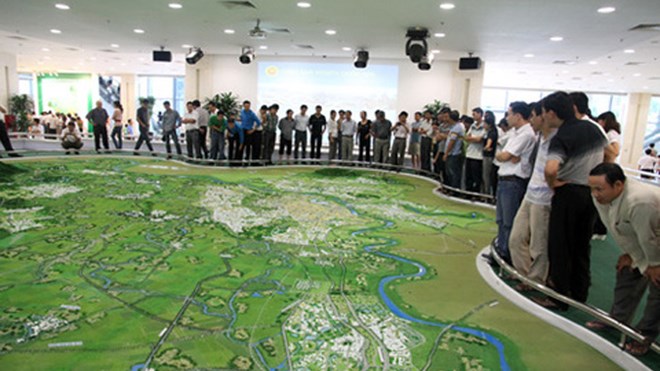Hanoi added three new members
 |
According to the new decision which has recently been issued by the prime minister, the expanded capital will cover Hanoi and its nine surrounding provinces, namely Vinh Phuc, Bac Ninh, Hai Duong, Ha Nam, Hung Yen, Hoa Binh, Phu Tho, Bac Giang, and Thai Nguyen, comprising a total area of 24,300 square kilometres.
The enlarged capital plan will help provinces create and foster connectivity based on the local characteristics and advantages of each province, share functions, and support each other in exploiting the provinces’ potentials during the socio-economic development progress.
Decision 768 also outlines socioeconomic development orientations for the above provinces. Accordingly, with the high rates of urbanisation and strengths in industry, human resources training, and infrastructure, Hanoi, Vinh Phuc, and Bac Ninh are expected to play a central role in the whole region’s development.
Being the headquarters of the country, Hanoi will be the main linkage connecting the nine surrounding provinces, and will be tasked to develop financial-commercial, cultural-historical, as well as high-tech research and development centres. Hanoi’s urbanisation rate is expected to reach between 65 and 70 per cent by 2030.
The south of Hanoi economic triangle, including Hai Duong, Hung Yen, and Ha Nam, has numerous advantages in developing urban-industrial services as well as industrial parks.
The northern provinces of Hoa Binh, Phu Tho, Thai Nguyen, and Bac Giang are considered gateways linking the capital with the northern midland and mountainous regions. In particular, Bac Giang is considered an export-import gateway and an important business-commercial hub linking the capital region with the north-eastern provinces of the northern midland and mountainous region.
The whole region’s urbanisation rate is expected to reach between 55 and 60 per cent by 2030.
What the stars mean:
★ Poor ★ ★ Promising ★★★ Good ★★★★ Very good ★★★★★ Exceptional
Latest News
More News
- Decoding the variables shaping investments in 2025 (December 13, 2024 | 10:53)
- Vietnamese enterprises embrace value creation model (December 13, 2024 | 09:00)
- Happy Vietnam awards honour photo and video artists (December 13, 2024 | 08:54)
- Vietnam unveils 2024 rankings of top employers and value-driven enterprises (December 12, 2024 | 17:00)
- ‘Blockbuster’ Eaton Park sells out just one week after launch (December 12, 2024 | 08:00)
- German businesses remain upbeat about Vietnam (December 11, 2024 | 15:45)
- Tech giants bet big on Vietnam's future (December 10, 2024 | 17:53)
- Forum on green solutions for industrial parks and investment promotion organised in Vinh Phuc (December 09, 2024 | 19:08)
- Vietnam and GGGI launch plan for green growth and climate action (December 08, 2024 | 20:38)
- FTZs to open regional doors for logistics (December 07, 2024 | 10:00)



















 Mobile Version
Mobile Version